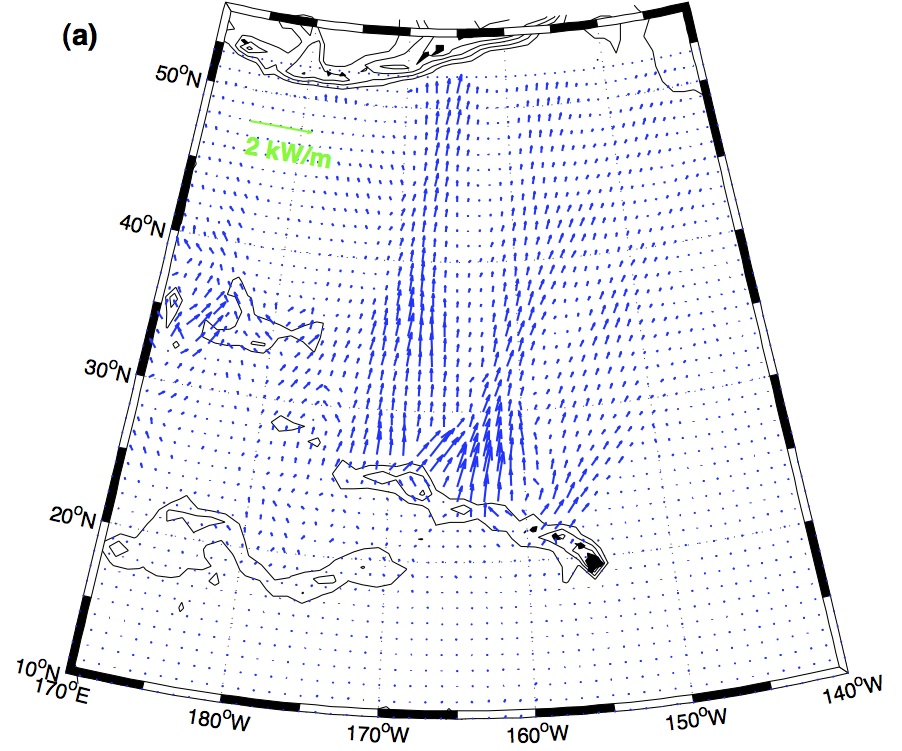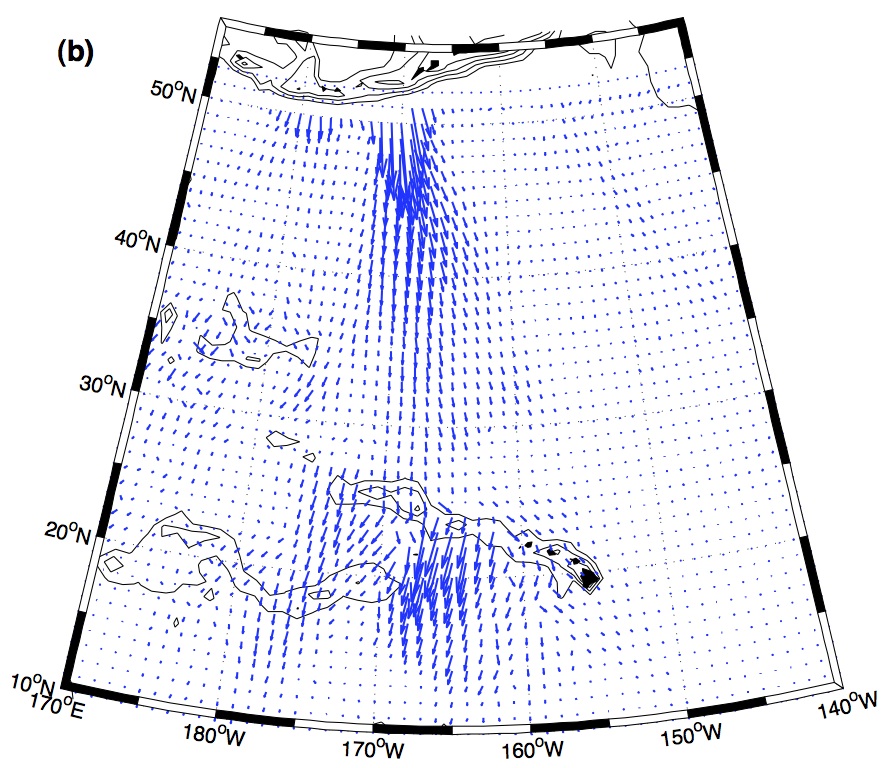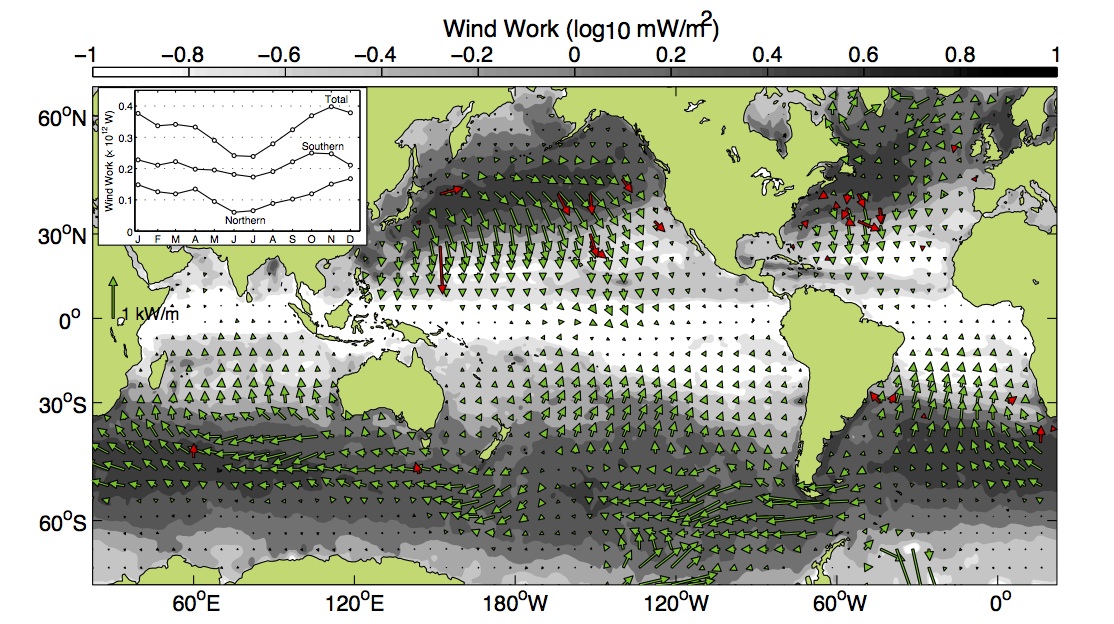work in progress
Farfield
For both internal tides and wind-generated near-inertial waves, a substantial percentage of generated energy escapes the generation site in the form of low-mode internal waves. In both cases, evidence suggets these low-mode waves may propagate for thousands of kilometers. Examples are shown in the Figure below.
 |
 |
 |
Figure 1: Patterns of low-mode internal wave propagation. Left and middle panels are mode-one internal tide propagation as inferred from altimetry, subdivided into northward and southward propagating components, reproduced from Zhao and Alford 2010. Right panel shows depth-integrated annual mean baroclinic near-inertial energy flux from a global high-resolution simulation (green arrows) and mooring-derived total near-inertial energy fluxes from Alford (2003b) (red arrows), with grey-scale background indicating modeled annual mean wind energy flux to upper ocean inertial motions. Reproduced from Simmons and Alford 2012.
In both cases it is unclear where and how this energy is dissipated, and what the resultant global mixing patterns look like. Possibilites under active investigation by CPT members include
- Scattering
over rough topography as waves propgate. This may include both tall
ridges (e.g. Johnston et al 2003) or deep rough topography (e.g. Muller
Liu 00). It may be possible to model this process in a way that is
analogous to the barotropic-baroclinic tidal conversion problem [Klymak
et al 13].
- Steady
"bleed" of energy through wave-wave interactions into an ambient,
Garret-Munk like internal wave field. An important subset of this
is Parametric Subharmonic Instability, which may be particularly
efficient at removing energy from a propagating semi-diurnal internal
tide near 29N, the critical latitude for subharmonic, diurnal
motions. Observations made as part of the Internal Waves Across
the Pacific experiment found some observational evidence of PSI near
this latitude, with a modest (factor of 2-3) elevation of turbulent
diffusivity. Nevertheless, even modest changes in diffusivity may
be important for the main thermocline, where background mixing rates
are relatively weak. [Alford et al 2007, Jochum
09, Sun
and Pinkel 2012,2013, MacKinnon
et al 13a,b]. CPT post-doc Joseph Ansong is working on these
issues.
- Waves
crash into continental slopes and dissipate their energy there. [Klymak
et al 13]. Preliminary analysis of available microstructure data,
combined with altimetry and other in-situ measurements suggests this
may be a significant percentage of total dissipation [Waterhouse et al
13], but is poorly understood or observed. It is also unclear
what the consequences of a "ribbon" of mixing along the continental
slope are for large scale circulation patterns. The answer will
likely depend on such complexities as the degree of coherence of an
incident internal wave [Kelly and Nash 2010, Klymak et al 2011], and
the potentially large effect of slope shape, corrugation and the
presence of submarine canyons [Legg and Adcroft 2003, Kunze et al 12].
 |
We gratefully acknowledge funding from
NSF and NOAA |
 |